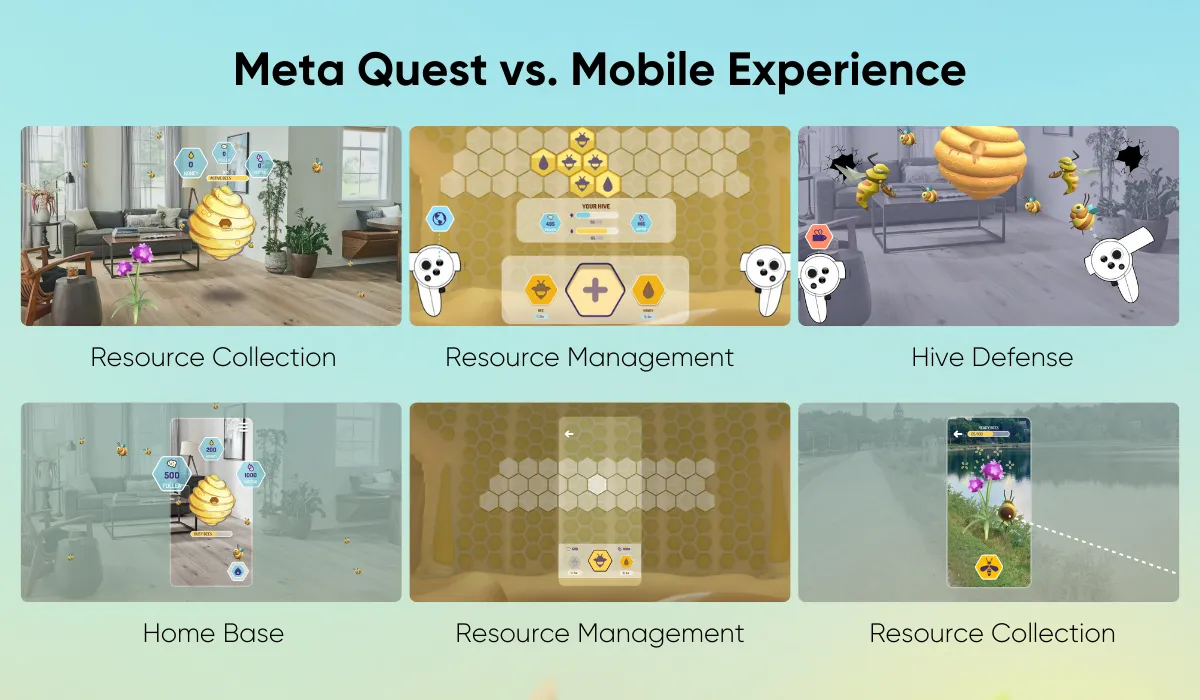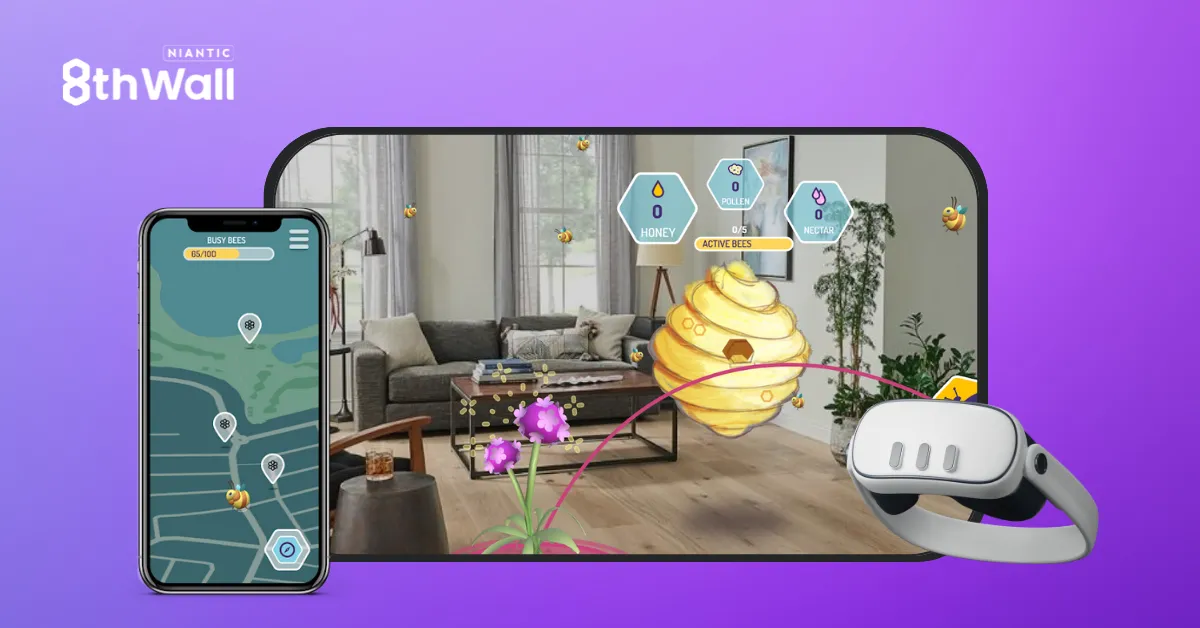Niantic and Meta partnered to fund three multiplayer mixed reality demo games that run in the browser and support crossplay between Quest 3 and mobile.
The demos were built over a ten week period using Niantic’s 8th Wall web-based AR engine, which has a fully in-browser editor and offers cloud hosting for built projects. Niantic is the company behind smartphone AR games like Pokémon GO, Pikmin Bloom, and Harry Potter: Wizards Unite.
The condition of the funding for the three teams was that their projects use 8th Wall’s multiplayer module to enable cross-play between headsets and traditional mobile devices like smartphones and tablets.

The three demos are Cardboard Crashers, Magical Forest, and BeeQuest.
Cardboard Crashers and Magical Forest are publicly playable, while we couldn’t find a public URL for BeeQuest. I found the performance of the playable games very poor on Quest 3, with visibly low frame rate, which was surprising given they’re both relatively graphically simple and ran well on my phone.
Another note: while the multiplayer fully works, it doesn’t include colocation, because WebXR anchors currently don’t support sharing/networking. That means you’ll have to manually align both the position and size of the board between devices to believably play in the same space.
We also tried to load both games on Apple Vision Pro in Safari, but they seemed to think the Vision Pro was a phone and tried to access the camera, only to obtain a virtual Persona webcam feed. Given the games are designed to be used with tracked controllers, Vision Pro would probably require specific porting anyways.
Cardboard Crashers
Cardboard Crashers is a turn-based game where each player sets the direction and force of their car with the objective of knocking the other player’s cars off the board.
The game uses 8th Wall’s physics module for the collisions between cars.
0:00
You can access Cardboard Crashers at this URL.
Magical Forest
Magical Forest is a realtime exploration game where players each control a character with the goal of uncovering all the insects in the scene.
You have a book with magical spells you can cast to help out.
0:00
You can access Magical Forest at this URL.
BeeQuest
BeeQuest is apparently a game where “players are plunged into the charming world of a honey bee, tasked with collecting resources, expanding their colony, and fending off wasp invasion”.
0:00
Compared to the other games, BeeQuest seems to have a divergent core gameplay between headsets and mobile:
“In the real world, players can use their phones to follow the map and uncover AR flowers, where they assign players to harvest pollen and nectar. With these resources in tow, they can either continue playing on mobile or switch to a headset to manage their resources and use the pollen and nectar to create more honey and bees. On Meta Quest 3, players can also enter a battle mode to protect their hive from pesky wasps wanting to steal their honey.”

To pull off the real world map integration on mobile, BeeQuest uses Niatnic’s Lightship Maps module, the same technology that powers its games like Pokémon GO.
Unlike the other two demos, there doesn’t appear to be a public URL for BeeQuest.






